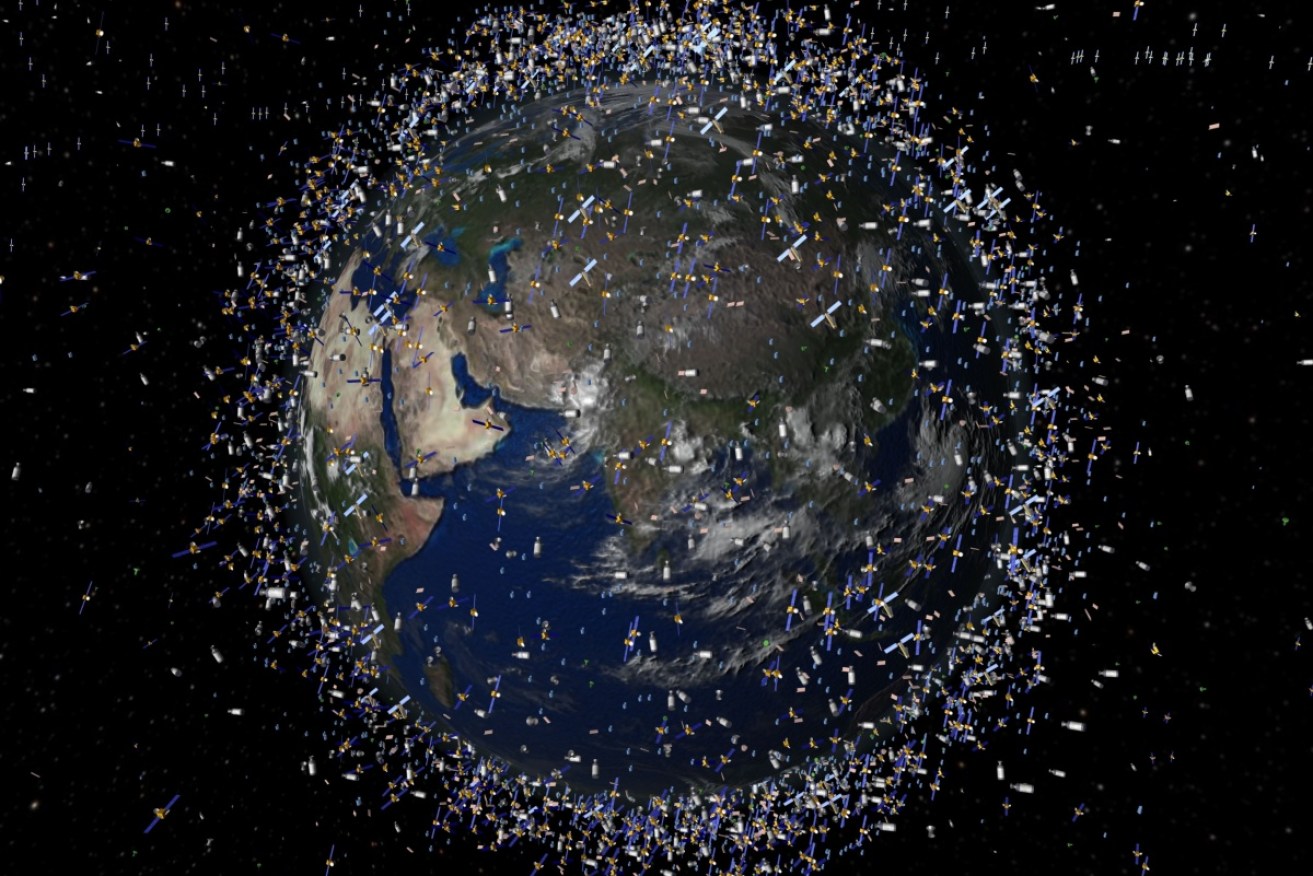‘Space junk’ collision a threat for satellites

AP
From flakes of paint to used rocket stages, millions of pieces of man-made space debris are flinging around the Earth at high speeds.
It was a concept dramatised in the 2013 blockbuster Gravity, but researchers have said it is a real problem which could cause serious damage to functioning satellites.
“There are about 30,000 pieces of space debris larger than a football … large enough to disintegrate a satellite,” Space Environment Research Centre’s Dr Ben Greene said.
• NASA creates inflatable tourist hotel of the future
• Violent solar storms helped foster life on Earth
• Mars mission spurs interest in joining NASA
“There are millions of smaller pieces, all of which could destroy a satellite’s function.”
Dr Greene is leading a research conference at the organisation’s Canberra-based hub on Mount Stromlo, canvassing ways to clear the estimated 170 million pieces of so-called space junk.
“Australia is the world leader in establishing where the junk is, how much there is and their precise orbits,” he said.
“[By doing that] we can manoeuvre satellites around the debris. Subsequently we want to implement various schemes to remove the junk.”
One proposal involves the use of ground-based lasers to sweep debris away from space infrastructure.
International Space Station damaged by paint flake

A crack on the International Space Station’s window which was caused by paint. Photo: Supplied
Even on the smallest scale, so-called “space junk” can cause real damage.
Earlier this month a suspected flake of paint smashed into the International Space Station’s (ISS) Cupola window, forming a crack on its quadruple-glazed surface.
“That was a tiny, tiny piece of space debris, the size of a couple of millimetres,” Dr Greene said.
The ISS is fitted with armour-plated quarters for astronauts to shelter during times of high risk – a risk which Dr Greene said is growing.
“The incidence of these collisions is increasing, and every time there is a collision there’s more debris,” he said.
“At some point this all becomes an avalanche of collisions … all the satellites will disappear … and no satellites can safely navigate through that.”
In fact, Dr Greene said the proliferation of space junk was already having real impact on the work astronauts could do.
“Extra-vehicular activity – astronauts moving out into space in space suits – has been all but eliminated as the threat of space junk has escalated,” he said.

An artist’s impression of a ground-based laser that would be used to move debris. Photo: Wikimedia Commons: Fulvio314
-ABC








